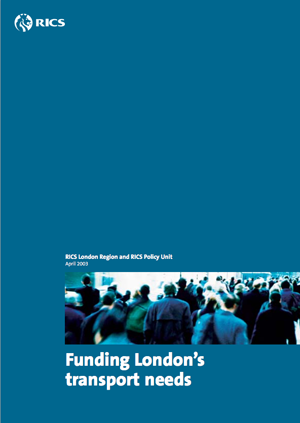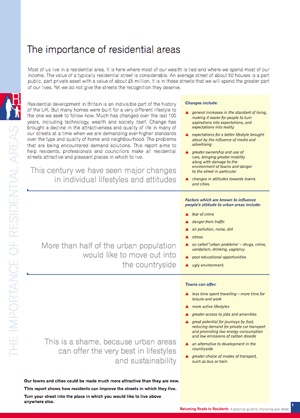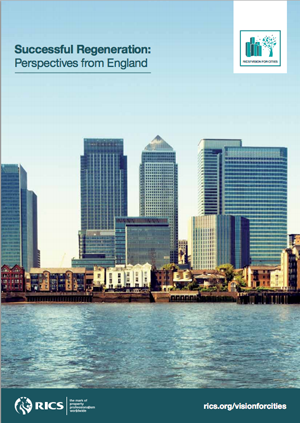Click here to view some papers we have worked on. See our new blog posts below.
OUR THINKING
July 28th, 2014
Heathrow: Davies Commission
As much as we like Boris Johnson, just one look at any road/rail map of the UK shows that he is clearly wrong about Heathrow. The massing of infrastructure and economic activity to the west of London in terms of rail links, both to Central London and the rest of the UK, as well as road links with the M4 and M3 corridors, positions Heathrow perfectly as the location for a UK hub airport. That is why it is there. In 2018, Crossrail will link west with east – so surely it’s time for a Great British compromise? Read the rest of this entry »
Tags: Airport, Boris, Boris Johnson, Conservative, Conservative Party, Government, Heathrow, High Speed 2, HS2, London, Mayor, Politicians, Politics, RICS, Tory, Transport, UK
Posted in Transport | Comments Closed
May 8th, 2014
…And another thing: it is not taking enough Tory Voters’ housing.
The project as scoped is in fact incomplete. The end result is that arguments for the project itself are incomplete. Effectively, the project process itself has become the debate, as our short termist political system is not fit to manage long-term land use. Read the rest of this entry »
Tags: Boris, Boris Johnson, Conservative, Conservative Party, Government, High Speed 2, HS2, London, Politician, Politics, RICS, Tory, Train, Transport, Travel, UK
Posted in Transport | Comments Closed
April 3rd, 2014
A problem for the built environment in the UK is that both the masterplanners and thought leaders are architects. I don’t think it is possible to stop architects being thought leaders and my world would be a duller place without them. But who is taking the lead from their thoughts? The idea that a Chief Architect to centralise that which must be local is extraordinary. Read the rest of this entry »
Tags: Architects, Conservative, Conservative Party, Development, Economic, Economics, Farrell, Government, Heseltine, Politician, Politics, Property, Sir Terry Farrell, Tory
Posted in Uncategorized | Comments Closed
February 28th, 2014
The extent of any property occupiers’ use of infrastructure is determined by the catchment of that occupier.
The catchment of an internet business such as Amazon, is in theory infinite, although each building’s actual catchment and therefore infrastructure use will be defined by the business operation. The catchment can be usefully compared with that of an out of town shopping centre, or an Argos “click and collect” store. All three being greater than that of a ‘bricks only’ high street shop. Catchment is relevant to any customer, resident, or business and will determine the value to any occupier of their building occupation. Read the rest of this entry »
Tags: Amazon, Business, Crossrail, Crossrail 2, Development, Economic, Economics, Government, High Speed 2, HS2, Politics, Property, RICS
Posted in Uncategorized | Comments Closed
February 28th, 2014
Successful businesses like Amazon exploit opportunity, which means they deliver outputs that are valued. The role of government is to provide the framework for that success. To enable that with land use and property, government needs to provide a framework that is fit for purpose. This stewardship needs to reflect the long term impact, funding requirement and interrelationship of the many aspects of the built environment. Topically, particularly true if it is also to capture the appropriate tax rate. Read the rest of this entry »
Tags: Amazon, Asset Management, Development, Economic, Economics, Government, Infrastructure, LEP, Local Enterprise Partnerships, Mark Prisk, Politicians, Politics, Prisk, Property, RICS, UK
Posted in Uncategorized | Comments Closed
January 31st, 2014
Mark,
Your opinion piece for Property Week (24 January) raises some interesting questions about how taxation of property could evolve from the current rating system.
You asked what is the difference in activity between a warehouse operated by Amazon and a “click and collect” store run by Argos? Read the rest of this entry »
Tags: Amazon, Argos, Development, Government, High Speed 2, HS2, LEPs, Local Enterprise Partnerships, London, Mark Prisk, Politicians, Politics, Property, Property Week, RICS
Posted in Property | 1 Comment »
January 24th, 2014
Original article can be found on the Property Week website here
Being a fixed overhead, business rates don’t reflect the changing fortunes of a company. So when there’s a downturn, the rates bill bites even harder.
However, for government — central and local — this makes business rates attractive. While other tax revenues rise and fall with the economy, business rates provide the public sector with a steady flow of revenue — currently £26bn. So all governments are very wary of tinkering with the system. Read the rest of this entry »
Tags: 1960s, 60s, Amazon, Argos, Development, Economic, Economics, General Rates Act, Government, London, Mark Prisk, Politics, Polticians, Prisk, Property, Property Week, RICS, Tax, Taxation
Posted in Uncategorized | Comments Closed
May 28th, 2012
Location, location, location; as relevant to governments and
their investment plans as it is to the most informed private
investment bodies
What should be built, when, where and why to ensure the responsible use of limited UK public resources? How can investment in the infrastructure necessary to enable sustainable settlement growth be targeted locationally?
Global economic realities must shape Government investment decisions by location. Assumptions based on the inertia of historic land use need to be understood for what they are. Radically different engines of growth, business linkages and economic outcomes will require location specific infrastructure investment if sustainable growth is to be secured in each region. Read the rest of this entry »
Tags: 1980s, 80s, China, Development, Economic, Economics, Globalization, Investment, LEPs, Locational Investment, Property, RICS, UAE, UK, United Arab Emirates
Posted in Uncategorized | Comments Closed
Land and property decisions have long term impact; take them carefully. Some work we have been involved with..

WISE MOVES

LOCATIONAL INVESTMENT

FUNDING LONDONS TRANSPORT

RESIDENTIAL AREAS

SUCCESSFUL REGENERATION






